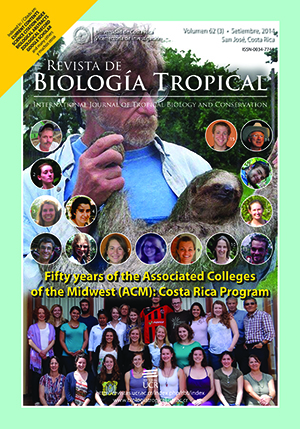Abstract
Seed dispersal is a fundamental process in plant ecology and is of critical importance for the restoration of tropical communities. The lands of the Cabo Rojo National Wildlife Refuge (CRNWR), formerly under agriculture, were abandoned in the 1970s and colonized mainly by non-native tree species of degraded pastures. Here we described the seed rain under the most common native and non-native trees in the refuge in an attempt to determine if focal tree geographic origin (native versus non-native) influences seed dispersal. For this, seed rain was sampled for one year under the canopies of four native and four non-native tree species common in this refuge using 40 seed traps. No significant differences were found for the abundance of seeds, or their diversity, dispersing under native versus non-native focal tree species, nor under the different tree species. A significantly different seed species composition was observed reaching native versus non-native focal species. However, this last result could be more easily explained as a function of distance of the closest adults of the two most abundantly dispersed plant species to the seed traps than as a function of the geographic origin of the focal species. We suggest to continue the practice of planting native tree species, not only as a way to restore the community to a condition similar to the original, one but also to reduce the distances needed for effective dispersal.
Comments

This work is licensed under a Creative Commons Attribution 4.0 International License.
Copyright (c) 2014 Revista de Biología Tropical






